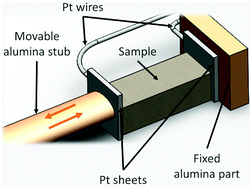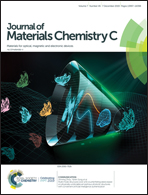Mechanism of densification in low-temperature FLASH sintered lead free potassium sodium niobate (KNN) piezoelectrics
Abstract
Lead-free potassium sodium niobate (K0.5Na0.5NbO3, KNN) piezoelectric ceramics have been densified at temperatures lower than 300 °C using atmosphere-water assisted FLASH sintering. Transmission electron microscopy (TEM) studies revealed amorphous phase at grain boundaries that resulted from surface melting of the cuboid particles in the presence of segregated impurities. We propose that preferential surface melting of the primary particles is induced in conductive channels of open pores in which water is adsorbed. This creates a network of pathways for the electric current. The resulting liquid phase induces fast densification through sliding of grain boundaries and viscous flow of the liquid driven by minimisation of surface energy. Finite Element Modelling (FEM) revealed that current density and Joule heating were also influenced by the geometry of contact between the cuboid KNN particles with vertex to vertex inducing the maximum current density and consequently creating the greatest volume of amorphous phase in adjacent pores. The lowest current density was predicted for face to face contacts, resulting in only a thin amorphous layer between grains.



 Please wait while we load your content...
Please wait while we load your content...